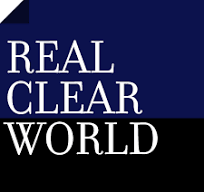In a new op-ed for iPolitics today, University of Saskatchewan Professor Ken Coates and I discuss the way forward for governments and First Nations.
Rage and rebirth: The way forward for First Nations
By Brian Lee Crowley and Ken Coates, iPolitics, December 20, 2012
Recent protests organized by the Idle No More movement and angry statements by some Western Canadian aboriginal leaders reflect real frustration among indigenous Canadians.
At the same time, several impressive agreements between aboriginal groups and businesses point to a burst of job creation, joint ventures and revenue-sharing the likes of which Canada has rarely seen. Which model — anger or cooperation — provides the best window on the future of indigenous relations with other Canadians?
Both do. The collaborative arrangements are very real. The recent agreement between Pinehouse First Nation and uranium companies Cameco and Ariva is truly impressive. Cameco, a leader in engagement with First Nations and Metis communities, has a workforce that is 50 per cent aboriginal and contracts 70 per cent of its supply work to indigenous firms. Comparable developments with Syncrude and Suncor in the oilsands have shown great promise. On an even larger scale, Inuit participation in the huge Baffinland (Mary River) mine is truly precedent-setting.
Most of the best aboriginal-business partnerships in the country have been signed in the last ten years, promising a pattern of job creation, indigenous business development and community benefits that seemed beyond reach just a decade ago.
The anger, however, is neither phony nor manufactured. The hardship and suffering in many First Nations communities is as real as it is painful. Schools are underfunded. Housing in many communities is totally unacceptable. Add in serious problems with addiction (including the scourge that is OxyContin), violence, welfare dependency and entrenched poverty and the rage felt by so many indigenous people becomes all too easy to understand.
This is, therefore, the best of times and the worst of times.
The Government of Canada, pursuing policies of equalizing opportunity, not circumstance, is providing policy tools (like the power to tax, reforms to property holding, heightened requirements for transparency) and investments that support those communities willing to commit to economic engagement and to take bold steps to improve socio-economic conditions among their people. The business community is more willing than ever to support these self-help initiatives. First Nations, Inuit and Métis communities looking to engage with the resource and industrial economy or to otherwise assume responsibility for their future direction are finding strong support.
Many communities, however, are not there yet. Sometimes individual and community dysfunction is too overwhelming. In other instances, the best will in the world cannot conjure jobs and growth in First Nations communities located too far from opportunities. And in other cases there is still the passive expectation (embodied in the now-defunct Kelowna Accord) that the Government of Canada will swoop in and make everything better through massive spending.
The idea of government-led improvements, popular in the 1970s and 1980s, falls short on two grounds. First, the Government of Canada believes that building on opportunities, not increased transfers, is the best way forward, and in this they are surely correct. Secondly, non-aboriginal support for more government transfers appears very low, especially among new Canadians. Indeed, there is mounting evidence that such support is declining, not rising.
The emergence of these divergent models of indigenous revitalization — opportunity-driven versus transfer-driven — creates enormous challenges. There is no greater stain on Canada’s reputation and conscience than aboriginal people living in abject poverty, condemned by poor education and community dysfunction to a life of hardship and marginalization. As a practical matter, however, prosperity cannot be conferred — it must be earned. The government can hardly be faulted for wanting to break with the old, paternalistic model of massive but poorly-conceived spending, passively received.
Given the diversity of circumstances in aboriginal communities, however, neither model answers the need alone. The government needs to articulate its “equality of opportunity” approach and to be clear about the tool kit that aboriginal communities will have at their disposal. The tool kit is substantial, including education, self-government, economic development, housing and improved infrastructure. But the obligation cannot be one-sided.
Ottawa also needs to articulate precisely what is required from individual communities — transparency to the community and government, a commitment to good governance, community support for education, and openness to commercial opportunities — if First Nations wish to capitalize fully on these measures and truly be Idle No More.
Most of all, aboriginal and non-aboriginal Canadians need to be frank with each other. Governments need to tell all Canadians what is on the table. Indigenous communities have to be invited to the table not as supplicants (an old model that is as patronizing as it is unproductive) or even as insistent and occasionally truculent bargainers (the current plan for many communities).
Instead, governments and First Nations have to come together as full partners, with a shared vested interest in the long-term improvement of prospects for aboriginal people. This is the only real foundation for meaningful reconciliation and shared prosperity.
—



